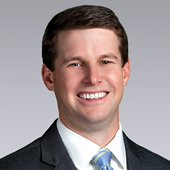Demand for Healthcare Grows as Baby Boomers Age
Healthcare demand among the country’s aging population has been steadily rising as Baby Boomers grow older, and is expected to reach its peak by the year 2030.
In eight years, 1 out of every 5 Americans will be of retirement age, marking the first time in U.S. history that older people are projected to outnumber children.
This demographic shift will have considerable impacts on healthcare resources, especially the workforce, and require innovative solutions to fill labor shortfalls and rising demand.
Workforce Implications
By 2030, when 20% of Americans are at least 65 years old, the old-age dependency ratio is projected to rise. This drop across the working-age population will result in a lack of qualified healthcare workers, a sector that’s already been acutely impacted by staffing shortages.
CNN reports that “the U.S. will need to hire 2.3 million new healthcare workers by 2025 in order to adequately take care of its aging population,” and a new AAMC study projects a shortfall of up to 124,000 physicians by 2034.
In addition to physicians, crucial healthcare roles in nursing, imaging and more will be vacant. Mercer estimates in the coming years that there will be 400,000 nursing assistant positions and nearly 51,500 nurse practitioner openings. These shortages will impact costs, as well as accessibility and turnaround times for lab results and tests.
Rising Healthcare Demand
Individuals 65 and older now account for 34% of the demand for physicians; by 2034, they will account for 42% of the demand. This rising demand, coupled with the workforce gaps, contribute to projected annual growth in national health spending, which is expected to reach nearly $6.8 trillion by 2030.
Demand for geriatric care services is predicted to rise at a CAGR of 5.3% annually, reaching $700 million by the end of 2028.
Data shows about 90% of seniors intend to remain in their current homes as they age, increasing the need for at-home care services and digital health tools such as wearable technology and remote monitoring devices.
Expanding the use of virtual health tools among seniors can help practitioners meet rising demand, improve access for those aging in-place, and improve care.
How Hospital and Health Systems are Responding
In response to the rising healthcare needs among seniors, many hospital systems are looking to build or expand. Bisnow reports hospital construction is up, with 45.1 million square feet of new construction in progress compared to the 28.7 million recorded in the second quarter of 2020.
The trend toward aging at home has fueled the growth of the thriving medical office sector. Total investment in medical office buildings (MOB) set a record in 2021: rising from $11.9 billion in 2020 to $17.4 billion in 2021. More hospitals are expanding to off-campus medical office locations to provide easier access in communities, as these assets are often located near central hubs of retail and dining.

 Shawn Janus
Shawn Janus


 Malcolm Randolph Jr.
Malcolm Randolph Jr.
 Brian Bruggeman
Brian Bruggeman